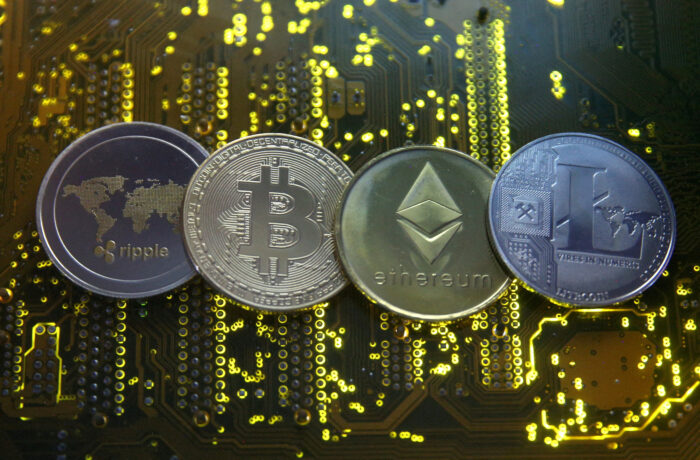The history of cryptocurrency development does not exceed 10 years. But today the idea of a possible replacement for the existing traditional currencies (the so-called “fiat money”) is gaining more and more popularity. The cryptocurrency is accepted for settlements on a variety of trading and entertainment platforms, in live casinos like shangrilalive.com and in online stores. Simplicity and convenience are very popular with users.
In its most generalized form, cryptocurrency is a kind of electronic medium of exchange that is anonymous and decentralized, based on cryptographic algorithms.
Market Performance
The value of cryptocurrencies has been highly volatile in recent years. For example, in 2017, the value of Bitcoin skyrocketed from around $1,000 to nearly $20,000 before crashing back down to around $3,000 in 2018. Since then, it has recovered and reached its ATH in 2021 with over $64,000 per BTC. However, many other cryptocurrencies have not been as fortunate and have lost a significant amount of value. Despite this volatility, the overall market capitalization of cryptocurrencies continues to grow, reaching over $2 trillion in 2021.
Adoption and Regulation

Source: reuters.com
While cryptocurrencies have gained a significant amount of attention in recent years, their adoption and use in everyday transactions remain relatively low. Many merchants and businesses do not accept them as payment, and they are not widely used for online purchases or money transfers. This is partly due to the lack of regulation and oversight in the cryptocurrency market, which has led to concerns about security and fraud. Governments around the world have taken various approaches to regulate cryptocurrencies, with some outright banning them and others creating frameworks for their use.
Potential Implications

Source: cnbc.com
Cryptocurrencies have the potential to fundamentally change the way we think about and use money. Their decentralized nature means that they are not controlled by any government or institution, potentially giving individuals more control over their own financial transactions. They could also facilitate cross-border transactions and financial inclusion for those who are unbanked or underbanked. However, there are also potential downsides, such as the increased risk of fraud and money laundering, and the potential for cryptocurrencies to be used for illegal activities.
The most famous type of cryptocurrency is Bitcoin. There are other types of cryptocurrencies: Litecoin, Namecoin, PPcoin, etc. They are sometimes collectively called Altcoin, an alternative coin. It is for this reason that it makes sense to dwell on the consideration of only this currency, taking into account that all other decentralized payment systems are built on similar principles.
Bitcoin was developed by a programmer or a group of programmers under the pseudonym Satoshi Nakamoto. In November 2008, a “White Paper” was published describing the mechanism of functioning Bitcoin and its protocol. Bitcoin is an open-source decentralized peer-to-peer digital currency.
The key differences between bitcoin and fiat money are as follows:

Source: dw.com
Decentralization. Bitcoin is a system based on a decentralized peer-to-peer network. It operates without a central clearing house or another intermediary. The Bitcoin network is not controlled by any one institution, much like a central bank controls the circulation of fiat money. Every computer involved in bitcoin mining and transaction processing is part of this network.
It is noteworthy that the Bitcoin system is one of the most successful examples of Blockchain technology. In essence, Blockchain is a ledger distributed among all participants in the Bitcoin network. Each user of a Bitcoin wallet keeps such a database on his computer containing the history of all operations ever carried out in the system. This ensures the transparency of each transaction and the possibility of verifying the origin of each Bitcoin by any interested user.
Inflation resistance. Unlike fiat money, which can be printed to increase the money supply, the Bitcoin system is designed in another way. The maximum number of coins is limited. According to a predetermined algorithm, only 21 million coins can be issued. To date, about 75% of the coins have already been issued.
Anonymity. Users can have multiple addresses. They are not tied to names, actual addresses, or other identifying information.
Transparency. While transactions are anonymous to a certain extent, they are transparent at the same time. In fact, bitcoins are just records of transactions between different addresses in the Bitcoin system, which make up the blockchain. Anyone on the web can see how much bitcoin is stored in each public bitcoin address.

Source: capital.com
The impossibility of canceling transactions. It is not possible to reverse a bitcoin transaction unless the recipient actually sends the coins back to the sender.
One area where cryptocurrencies have already begun to have a significant impact is in the realm of cross-border payments. Traditional cross-border payment systems can be slow and costly, with high transaction fees and long wait times for funds to clear. Cryptocurrencies, on the other hand, can be transferred almost instantly and at a much lower cost. This has led to the development of various platforms and companies that use cryptocurrencies to facilitate cross-border payments, such as Ripple and Stellar. These platforms can potentially provide a faster and more efficient way for businesses and individuals to send and receive money across borders.
Another area where cryptocurrencies have the potential to have a major impact is in the field of micropayments. Micropayments are small, usually less than a dollar, payments that are often too costly to process using traditional payment methods. Cryptocurrencies, however, can facilitate these tiny transactions at a lower cost, making it possible to charge for small digital goods and services, such as news articles, music, or videos.
Cryptocurrencies also have the potential to change the way we think about property ownership and rights. The immutable, transparent, and tamper-proof nature of blockchain technology can be used to record and verify property ownership, property transaction records, and other important documents like land titles, deeds, and mortgages. This can help to reduce fraud and corruption in property markets and make it easier for people to access and prove their rights to property.
In conclusion, while the potential benefits of cryptocurrencies are undeniable, it is important to consider the potential drawbacks and challenges that must be overcome for them to be widely adopted and have a significant impact on the global economy. As technology and infrastructure continue to improve and regulations are put in place, it will be interesting to see how the use and adoption of cryptocurrencies evolve in the future.
